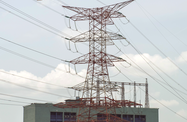Despite lower hydrocarbons earnings last year, Malaysia is moving forward with targeted energy investment and improved operational practices.

Petronas is pushing ahead with development of a large-scale refinery and petrochemicals plant in the southern state of Johor, with support from Saudi Arabia guaranteed as of last month.
In late January Petronas confirmed it would complete its Refinery and Petrochemical Integrated Development (RAPID) project on schedule, with production to commence in 2019. When fully on-line, the complex will have the capacity to process 300,000 bpd and up to 7.7m tonnes of petrochemicals annually.
Following the announcement, oil giant Saudi Aramco announced at the end of February that it would invest $7bn in the RAPID project out of a total investment of $16bn. This put to rest concerns that the programme would be scaled back or delayed, amid reports in January that the Saudi company had stepped away from forming a partnership with Petronas.
Building chains
The refinery is part of a larger development, the Pengerang Integrated Complex (PIC), which includes further midstream and downstream facilities intended to strengthen Malaysia’s value-added hydrocarbons chain, and help it maximise returns on its natural resources.
Establishing a complete supply and processing chain – encompassing upstream, mid-stream and downstream components – is becoming more important for Malaysia, particularly against a backdrop of lower oil prices.
Supply side
To maintain the links in this chain, Malaysia needs to sustain the flow of feedstock oil and gas for processing.
Last year saw a roughly 2% reduction in oil output to 648,000 barrels per day (bpd), down from 662,000 bpd the previous year, due in part to the maturing of existing fields.
As production wanes at several of its established, Petronas is looking to enhanced oil recovery (EOR) technology to maximise extraction, and also sees potential to boost production by developing smaller fields. The challenge for such projects will be to ensure profitability and viability in the present operating climate.
To this end, Petronas inked a deal with local upstream company Uzma at the beginning of the month to conduct research and development with universities on EOR projects that use carbon dioxide.
Extending the operating life of existing fields through EOR technology should also open up opportunities for service providers in the segment.
Balancing act
Though it has committed to continuing its RAPID project and other PIC-related developments, Petronas is likely to carefully weigh the costs at each stage, balancing outlays against potential returns.
Indeed, low oil prices saw state-owned energy firm Petronas register a 96% dip in profits in the first half of 2016. However, resurgent energy prices saw revenue recover by 1% in the third quarter to RM48.74bn ($11bn) and to RM58.6bn ($13.3bn) in the final quarter, a trend expected to continue into 2017.
While Malaysia is slated to cut its oil output by another 3%, or 20,000 bpd, this year –part of an agreement struck with the Organisation of Petroleum Exporting Countries at the end of 2016 to curb market oversupply – the impact on earnings could be offset by price increases expected from the reduction in excess global supply.
Nonetheless, this scenario has seen Petronas adopt a more careful approach towards investments and implement greater operational cost efficiencies.
Last year Petronas announced it was tightening its budget, cutting spending in the years to 2020 by as much as RM50bn ($11.2bn). In the first 11 months of 2016, the company said it had reduced costs by 9.4% y-o-y to RM30.7bn ($6.9bn).


